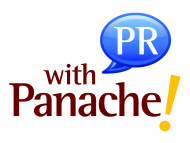Consumer and social media are adept at sharing negative news about education. Here’s how administrators and teachers can get the good news out there, too
 When it comes to covering K-12 education, the consumer media does a fantastic job of telling the bad news. I understand why this is the case: Publications need to make money, and headlines like “FBI Seizes LAUSD Records Related to Troubled iPad Program” will always grab more readers’ eyeballs than, say, “Class Full of Happy Students Learns to Multiply.” But if you judged the success of this country’s public schools only by looking at “above the fold” articles in major newspapers and magazines, you would believe that K-12 education is nothing but one crisis after another. And from talking to educators and administrators around the country, I know that this is not true.
When it comes to covering K-12 education, the consumer media does a fantastic job of telling the bad news. I understand why this is the case: Publications need to make money, and headlines like “FBI Seizes LAUSD Records Related to Troubled iPad Program” will always grab more readers’ eyeballs than, say, “Class Full of Happy Students Learns to Multiply.” But if you judged the success of this country’s public schools only by looking at “above the fold” articles in major newspapers and magazines, you would believe that K-12 education is nothing but one crisis after another. And from talking to educators and administrators around the country, I know that this is not true.
There is good news coming out of America’s classrooms every day. The challenge for schools and districts is to make their positive voices heard above the negative noise coming from consumer (and social) media. How can they do this? Here are four tips.
Know Your Story
Educational leaders need to shout their success stories from the rooftops, but before you speak up, you need to be clear about what your story is.
For example, through one of our clients I recently met Dr. Genevra Walters, the superintendent of Kankakee School District in Illinois, whose motto is “The transition to adulthood starts in preschool.” Dr. Walters backs this up by having each general ed grade in K-8 focus on a different career. So Kankakee’s story is clear: “We are the district that does everything we can to find the right career for our students, starting when they are five or six years old.”
Oh, and it doesn’t hurt that Dr. Walters herself is a graduate of Kankakee schools who rose to become superintendent of the district.
Have a Hook
Like I said before, “Class Full of Happy Students Learns to Multiply” is a nice story, but a tough sell for the media. To get your good news published, you need a hook—some aspect of the story that will grab editors’ and readers’ attention and keep them reading. In Kankakee’s case, there are two potential hooks. The first one is that the district starts career education when kids are so young. It’s unusual and unexpected, and it makes readers want to find out how the district does it.
The second hook is Dr. Walters herself, a classic “local girl made good.” Which brings me to another important point about storytelling for schools: People are better than programs. Yes, it’s amazing that your district has a teacher who is helping three- and four-year olds build a Mars rover, but who is that teacher? A former astronaut? A former “bad kid” who found his calling in the classroom? The “human interest” story is a cliché because it’s true. Humans are interested in other humans.
Connect Your Story to a Larger Narrative
Another great way to get positive attention from the media is to connect your school’s story to a larger national or international narrative. Right now, for example, the story of a Syrian refugee child who comes to a new school and teaches her classmates about Syrian culture would be a big hit. And it’s not just one-time events that you can connect with. Editors are always looking for stories that tie in with recurring events like presidential elections, the Olympics, or even the Super Bowl.
Tell Your Story Every Day
In today’s connected world, getting articles published in newspapers or magazines is only a part of telling your story. Whether you like it or not, part of your story is being told on social media every day, by students, parents, and pundits, all of whom have their own agenda. And though the temptation to respond to critics can be strong, I think we can all agree that engaging in a shouting match in the echo chamber of the Internet is worse than useless.
Instead, I suggest following the lead of Tom Murray, the State and District Digital Learning Policy and Advocacy Director at the Alliance for Excellent Education. In his former job as director of technology and cyber education in the Quakertown Community School District, Murray was in a meeting with 30 administrators who he wanted to enlist in telling the school’s story through Twitter. “Our goal,” he said, “became to highlight one great thing a teacher was doing and one great thing a student was doing each day, taking no more than five minutes.”
Two Tweets times 30 administrators times five days equaled 300 positive stories coming out of the district every week. Seeing how easy it was, teachers joined in, highlighting their successes on the district’s hashtag. With a little initiative and diligent follow-through, the Quakertown community collaborated to tell its story—one Tweet at a time.
__________
Christopher Piehler is the Lead Storyteller at PR with Panache! The former editor-in-chief of THE Journal, he has worked for a variety of consumer and B2B publications. He has been an ed tech commentator on both TV and radio, has served as a CODiE award judge, and has been a speaker at the FETC and CoSN conferences.
This is the first part of a two-part article. Part two will cover how schools can use local, national, and education-focused publications to tell their stories to a variety of audiences.

